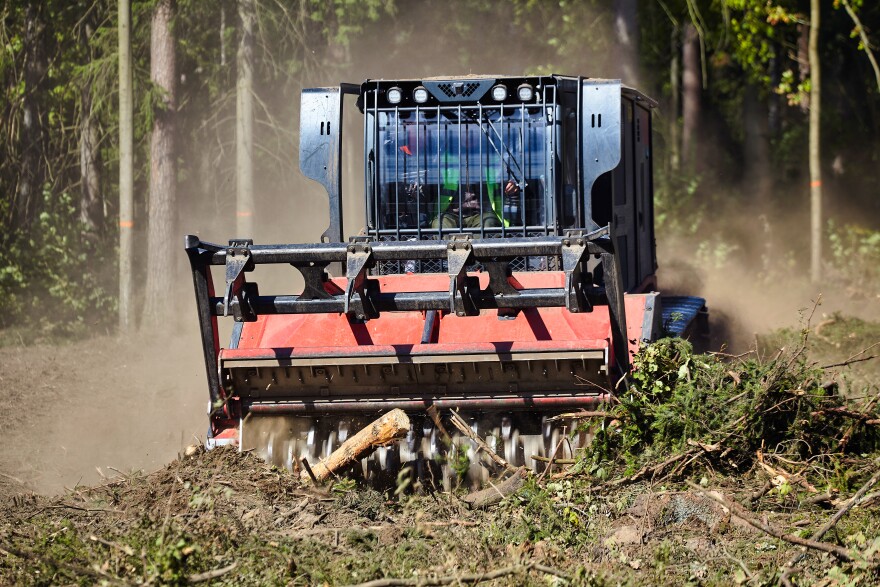The Utah Division of Forestry, Fire, and State Lands is spearheading a multi-agency effort to prevent fire in Parleys Canyon and keep the water flowing through it clean.
The latest Utah Watershed Restoration Initiative project is mulching trees and brush on the south side of Interstate 80 near Lamb’s Canyon.
The state is using bullhog masticators attached to skid steers and excavators to do the mulching. They’re machines with rotating teeth that shred vegetation.
The primary purpose is to thin out brush that would fuel wildfires. There’s a secondary benefit to Salt Lake City’s water supply too.
The city’s director of the Department of Public Utilities Laura Briefer said wildfires corrupt drinking water, and 20% of Salt Lake City’s water comes from the Parleys watershed.
The mulching project began last fall.
Robby Edgel is a habitat restoration biologist for the Utah Division of Wildlife Resources. He said thinning 262 acres of oak brush on Salt Lake City-owned land and 70 acres on U.S. Forest Service-owned land in the canyon last year has worked well.
"We are seeing a reduction in oak brush and a significant increase in the quantity and diversity of understory vegetation,” Edgel said. “This new vegetation will help provide food for wildlife in the area, including for big game animals, like deer and elk, to help them build up body fat for better survival during heavy snowfall like last winter.”
He said it will make room for wildflowers too, and the bees and butterflies that rely on it.
The forest service estimates an additional 128 acres will be thinned on Salt Lake City lands and 194 acres on U.S. Forest Service lands this June.
It asks those planning to enjoy recreational activities in the area to exercise caution and possibly seek out alternative locations.



